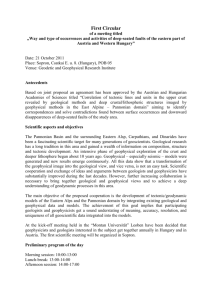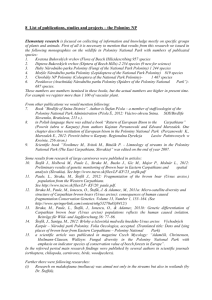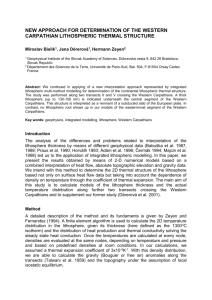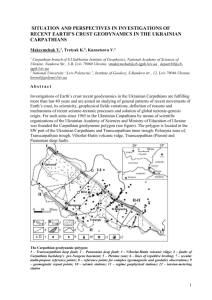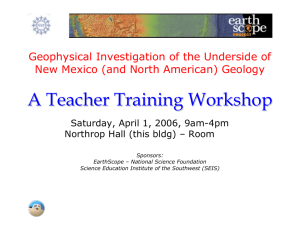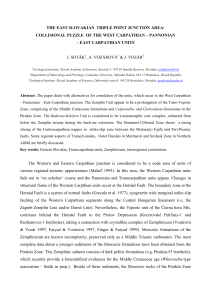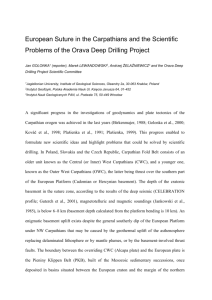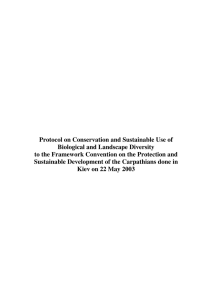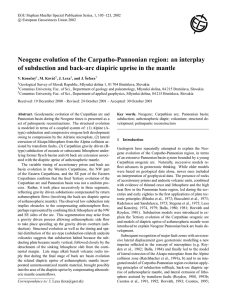The deep structure and geodynamics of the Carpathian
advertisement
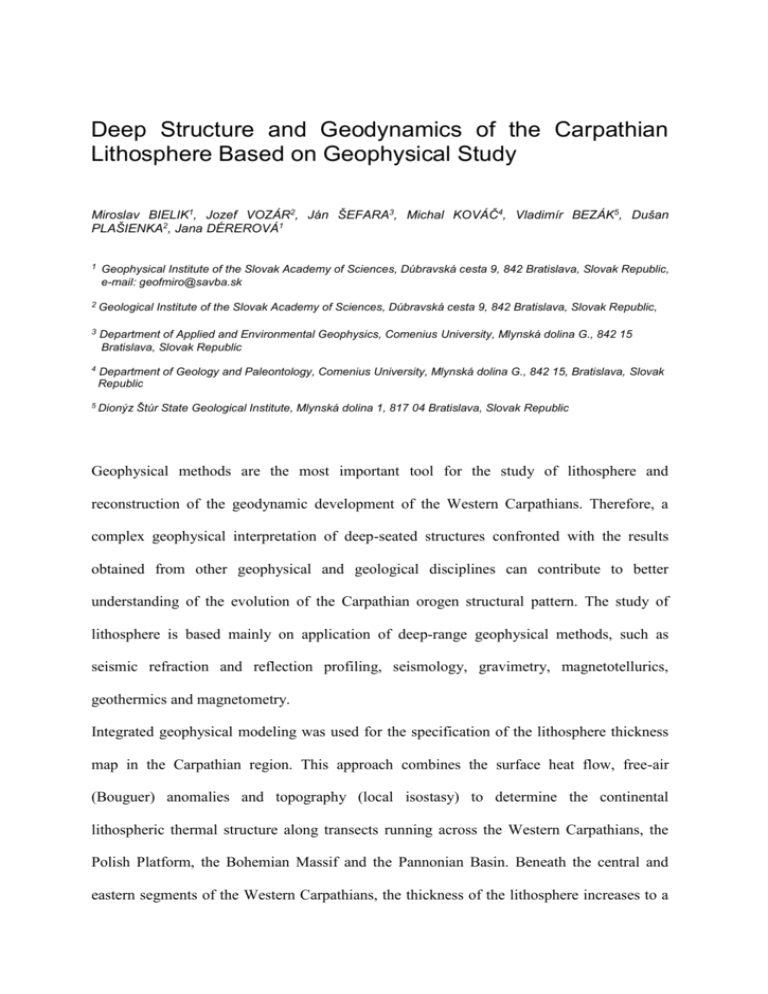
Deep Structure and Geodynamics of the Carpathian Lithosphere Based on Geophysical Study Miroslav BIELIK1, Jozef VOZÁR2, Ján ŠEFARA3, Michal KOVÁČ4, Vladimír BEZÁK5, Dušan PLAŠIENKA2, Jana DÉREROVÁ1 1 Geophysical Institute of the Slovak Academy of Sciences, Dúbravská cesta 9, 842 Bratislava, Slovak Republic, e-mail: geofmiro@savba.sk 2 Geological Institute of the Slovak Academy of Sciences, Dúbravská cesta 9, 842 Bratislava, Slovak Republic, 3 Department of Applied and Environmental Geophysics, Comenius University, Mlynská dolina G., 842 15 Bratislava, Slovak Republic 4 Department of Geology and Paleontology, Comenius University, Mlynská dolina G., 842 15, Bratislava, Slovak Republic 5 Dionýz Štúr State Geological Institute, Mlynská dolina 1, 817 04 Bratislava, Slovak Republic Geophysical methods are the most important tool for the study of lithosphere and reconstruction of the geodynamic development of the Western Carpathians. Therefore, a complex geophysical interpretation of deep-seated structures confronted with the results obtained from other geophysical and geological disciplines can contribute to better understanding of the evolution of the Carpathian orogen structural pattern. The study of lithosphere is based mainly on application of deep-range geophysical methods, such as seismic refraction and reflection profiling, seismology, gravimetry, magnetotellurics, geothermics and magnetometry. Integrated geophysical modeling was used for the specification of the lithosphere thickness map in the Carpathian region. This approach combines the surface heat flow, free-air (Bouguer) anomalies and topography (local isostasy) to determine the continental lithospheric thermal structure along transects running across the Western Carpathians, the Polish Platform, the Bohemian Massif and the Pannonian Basin. Beneath the central and eastern segments of the Western Carpathians, the thickness of the lithosphere increases to a maximum of 140–150 km. We interpret the lithospheric thickening as a small remnant of a subducted slab. Unlike the central and eastern segments of the Western Carpathians, a clear lithospheric thickening is not compatible with the data in the western segment of the Western Carpathians. The differences in lithospheric thickness in these two segments of the Western Carpathians can be explained by a different geodynamic evolution of these areas. Based on a critical analysis of earlier models, a new interpolation of former geophysical data and results of integrated modelling, we constructed a new map of lithosphere thickness in the region of the Carpathian–Pannonian Basin System. An integration of the existing geophysical and geological data and knowledge of deep geological structure and geodynamics of the Western Carpathians was made on the basis of 2D density modelling. The method of modelling of lithospheric inhomogeneities was applied along the most important Western Carpathian deep seismic transects. Crustal seismic structures along the CELEBRATION 2000 profiles CEL01, CEL04, CEL05, CEL06, CEL09 and CEL11 clearly indicate seismically anomalous zones within the crust and the uppermost part of the lower lithosphere beneath the Western Carpathians and the adjacent tectonic units. The complicated structure of the Western Carpathian lithosphere with specific physical and rheological properties is a result of the youngest deep-seated processes in the orogen collisional zone and high thermal stage of the Pannonian back-arc basin system. The crust of the Western Carpathians and neighbouring areas has a complex pattern and is composed of fragments being formed during Neoalpine, Paleoalpine and Hercynian orogenic stages. Geophysical investigations are available to identify most of these crustal structures. In this study, we described particularly the structures of Neoalpine collision (slab detachment zone, compressional accretionary wedge of the Outer Western Carpathians – Flysch Belt, tensional structures and asthenospheric diapir as a result of back-arc extension), structures related to the Cretaceous thrust-stacking, subhorizontal reflection packages interpreted as tensional structures of various generations, underplated intra-Penninic (Oravic) continental ribbon, traces of Meliatic oceanic suture and northerly dipping reflection beam are interpreted as the boundaries of Hercynian lithotectonic units with opposite vergency to the Paleoalpine units.
